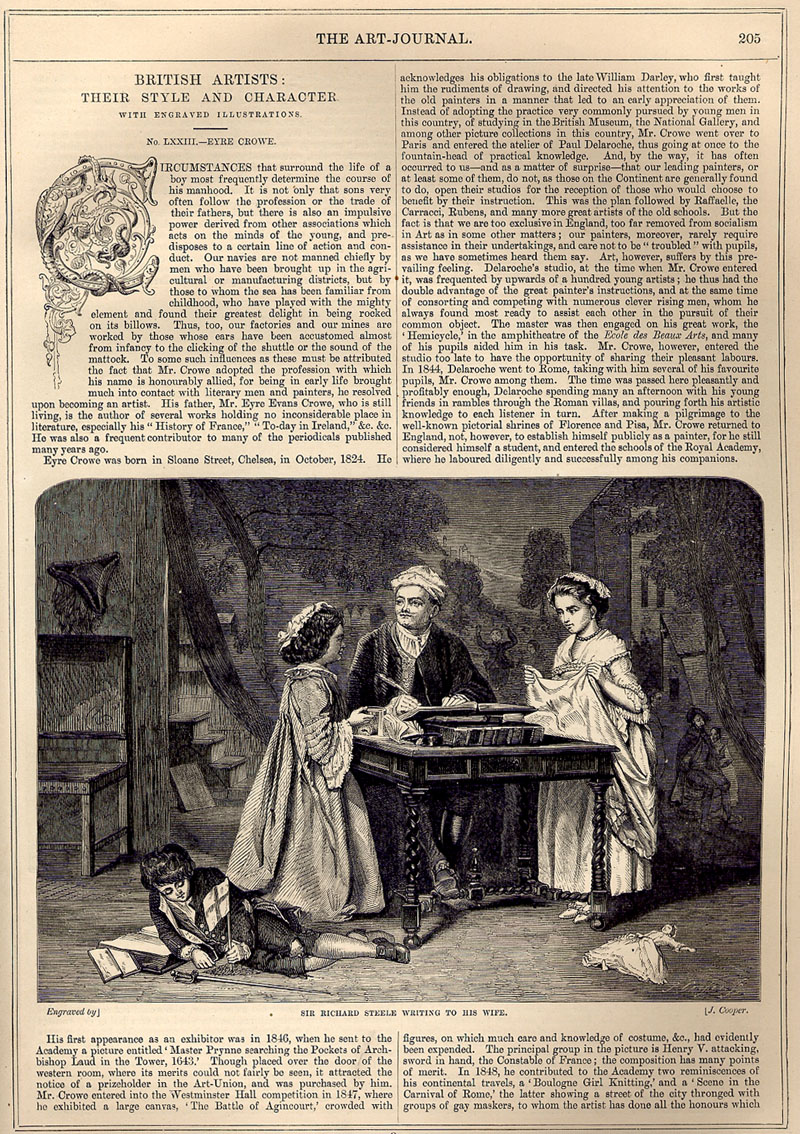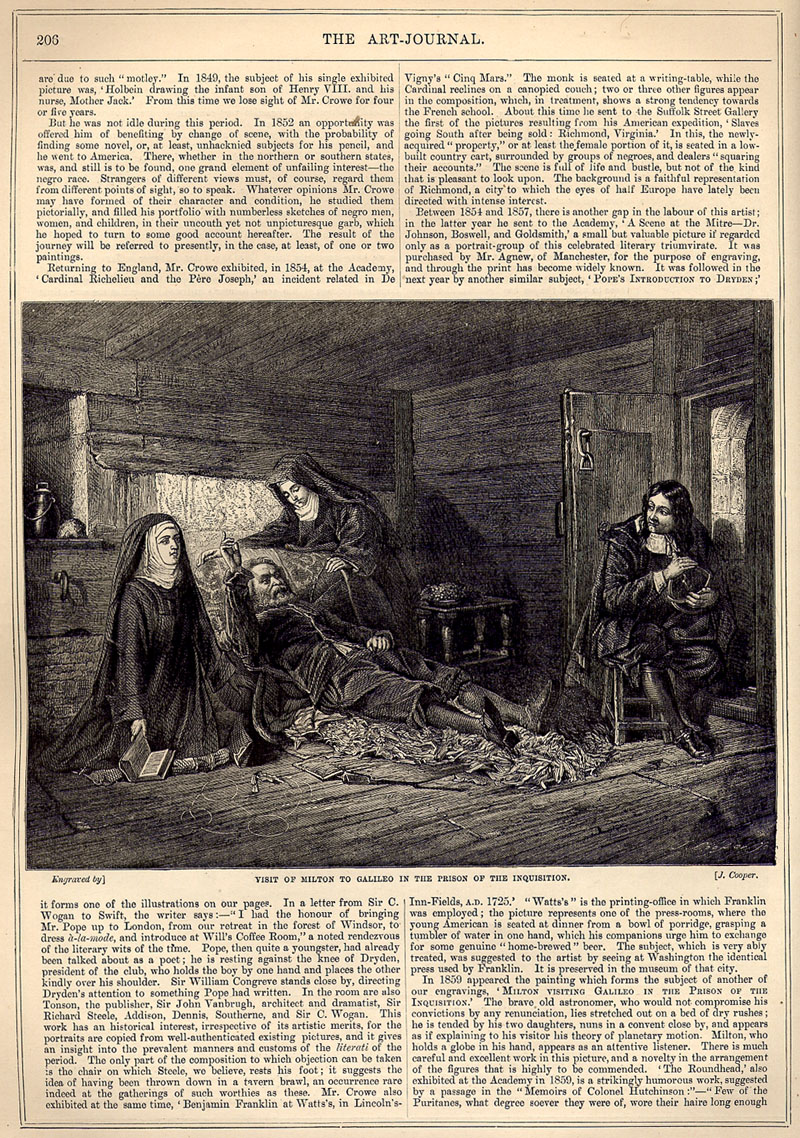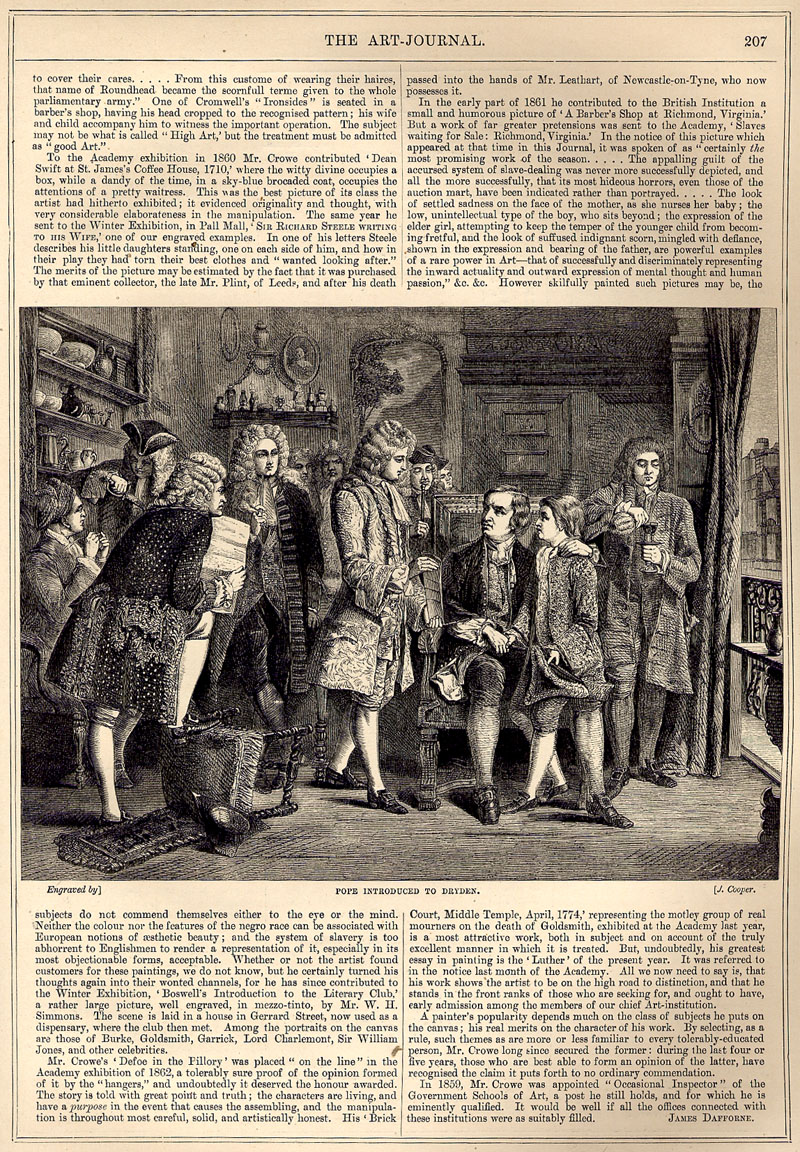http://www.geocities.com/eyre_crowe/index.html
Copyright(c) 2005 Kathryn J. Summerwill. All rights reserved.
Eyre Crowe was a Victorian painter of historical and genre works of art. He studied in Paris with the French artist Paul Delaroche, and at the Royal Academy Schools in London. He exhibited at the Royal Academy from 1846 to 1908. He is also known for his friendship with William Makepeace Thackeray, whom he met in the 1830s. In 1852-1853 Crowe accompanied Thackeray on a lecture tour, which he recalled in his book With Thackeray in America (1893).
This site, which is a non-commercial appreciation of Crowe's life and work, contains biographical information, details of all his known paintings, auction records, images where available, details of exhibitions, contemporary reviews, and a full bibliography including links to other websites useful to those interested in 19th-century art.
Last updated: 7 April 2006
Title: Milton Visiting Galileo in the Prisons of the Inquisition (1859)
Medium: oil
Exhibited: Royal Academy, 1859
'There it was that I visited the famous Galileo, grown old, a prisoner to the Inquisition, for thinking of astronomy otherwise than the Franciscan and Dominican licencers thought.'
'Galileo's daughters, who were nuns in a convent close by Galileo's prison, tended him during his incarceration; and the eldest, who was his favourite, read seven penitential psalms, a recitation which formed part of Galileo's sentence.'
Engraving by J Cooper of Milton visiting Galileo in the Prisons of the Inquisition, by Eyre Crowe (1859)
Published in the Art Journal, June 1864
Athenaeum, 21 May 1859:
Mr Crowe's Milton visiting Galileo in the Prisons of the Inquisition (569) is very cold in painting and silly in conception. The old gentleman on his shavings could not have discovered anything, not even a needle in a bottle of hay; the nun daughters are caricatures and Milton looks a dolt...
The Times, 18 May 1859:
Mr Crowe's Milton visiting Galileo is carefully painted - almost too carefully. It is not well in the presence of the great Florentine to be so conscious of the velvet of his trunks and the Indian corn husks he rests upon. But there is praiseworthy conscientiousness in every part of the picture.
Art Journal, 1859, p. 170:
This is an admirable subject, but it is materially damaged by the way the background material is painted up. Galileo is stretched upon a couch of dried sedges, tended by his two daughters, who were nuns in a convent prison; but Milton sits at the door, as if he was not of the party - an arrangement which disintegrates the composition. As well as can be seen, the figures are most carefully drawn and painted.
Art Journal, June 1864:
There is much careful and excellent work in this picture, and a novelty in the arrangement of the figures that is highly to be commended.


